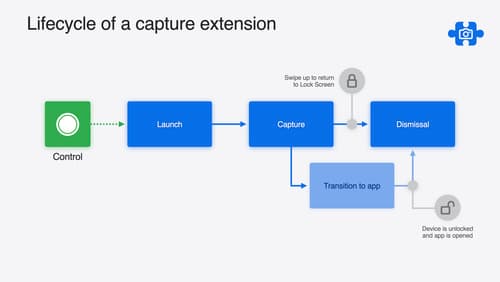extensionContext
Asked on 2025-06-18
1 search
The concept of "extensionContext" is related to app extensions, which allow you to extend custom functionality and content beyond your app. In the session titled "Build a great Lock Screen camera capture experience" from WWDC 2024, it is mentioned that an app context is shared between your application and extension. This context can be used to store user preferences or settings that you want to share between your capture experience and your extension.
For example, you might store data to represent app purchases made by a person in your application, so they can also be used in your capture extension. To update the app context, you would call the update appcontext function, passing in the new app context you wish to persist. However, it's important to note that the app context has a limited size, and if it is too large, it will not be persisted, which may impact the behavior of your capture experience.
For more details, you can refer to the session Build a great Lock Screen camera capture experience (15:33).

Build a great Lock Screen camera capture experience
Find out how the LockedCameraCapture API can help you bring your capture application’s most useful information directly to the Lock Screen. Examine the API’s features and functionality, learn how to get started creating a capture extension, and find out how that extension behaves when the device is locked.

Verify identity documents on the web
Learn how Digital Credentials can enhance online identity verification flows. We’ll cover how websites can integrate the Digital Credentials API to enable requesting information from IDs in Wallet. We’ll also explore how apps can provide their own identity documents for online verification using the new IdentityDocumentServices framework.

Filter and tunnel network traffic with NetworkExtension
Learn about the APIs in the NetworkExtension framework that give your app the power and flexibility to extend the system’s core networking features — like implementing network content filters, creating and managing VPN configurations, and more. In iOS, iPadOS and macOS 26, you can now build robust content filters that make traffic decisions using the entire URL — not just the hostname — all without compromising privacy and security. We’ll start by briefly covering many of the key use cases for the NetworkExtension framework, including network relays and VPN. Then, we’ll dive into the new URL filter API and its key components, including Private Information Retrieval, Privacy Pass, and more.
